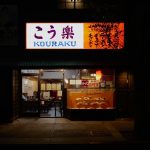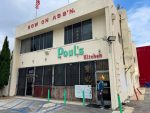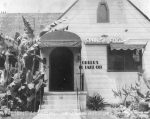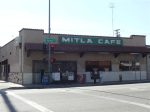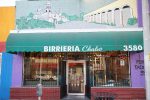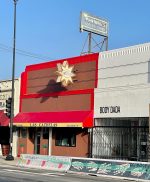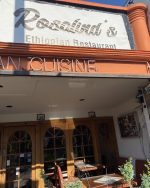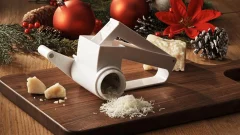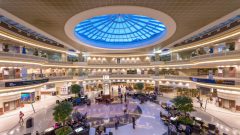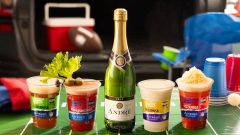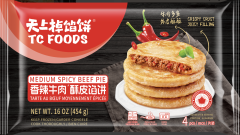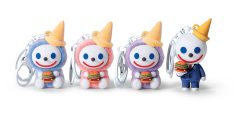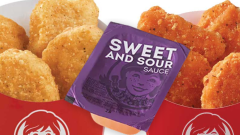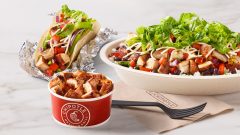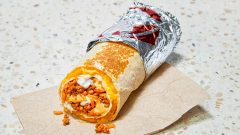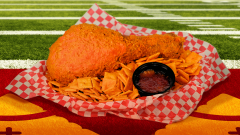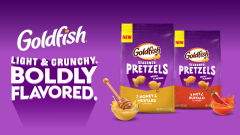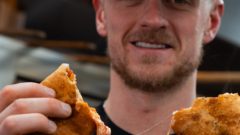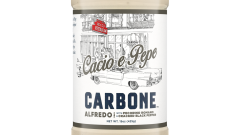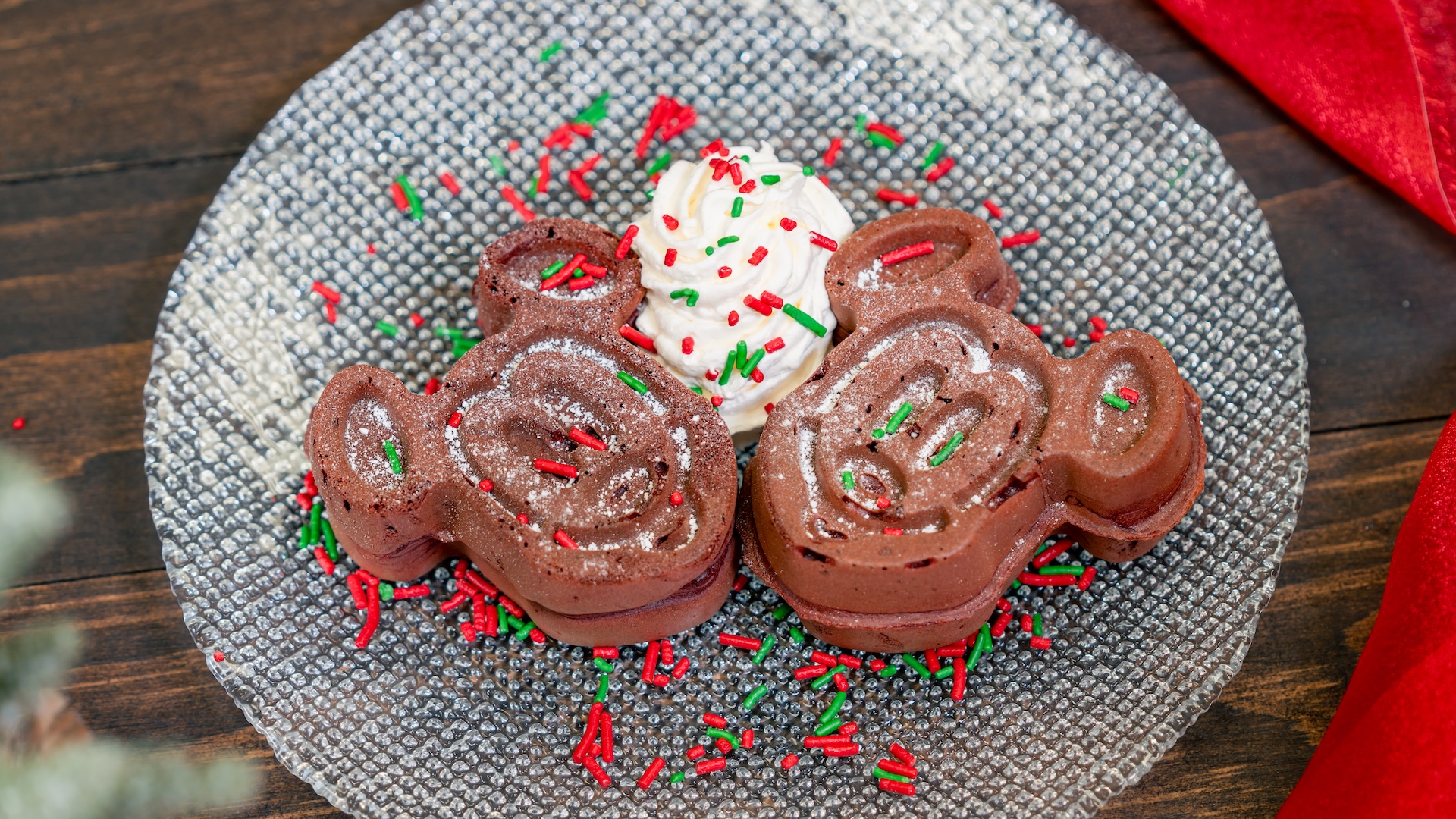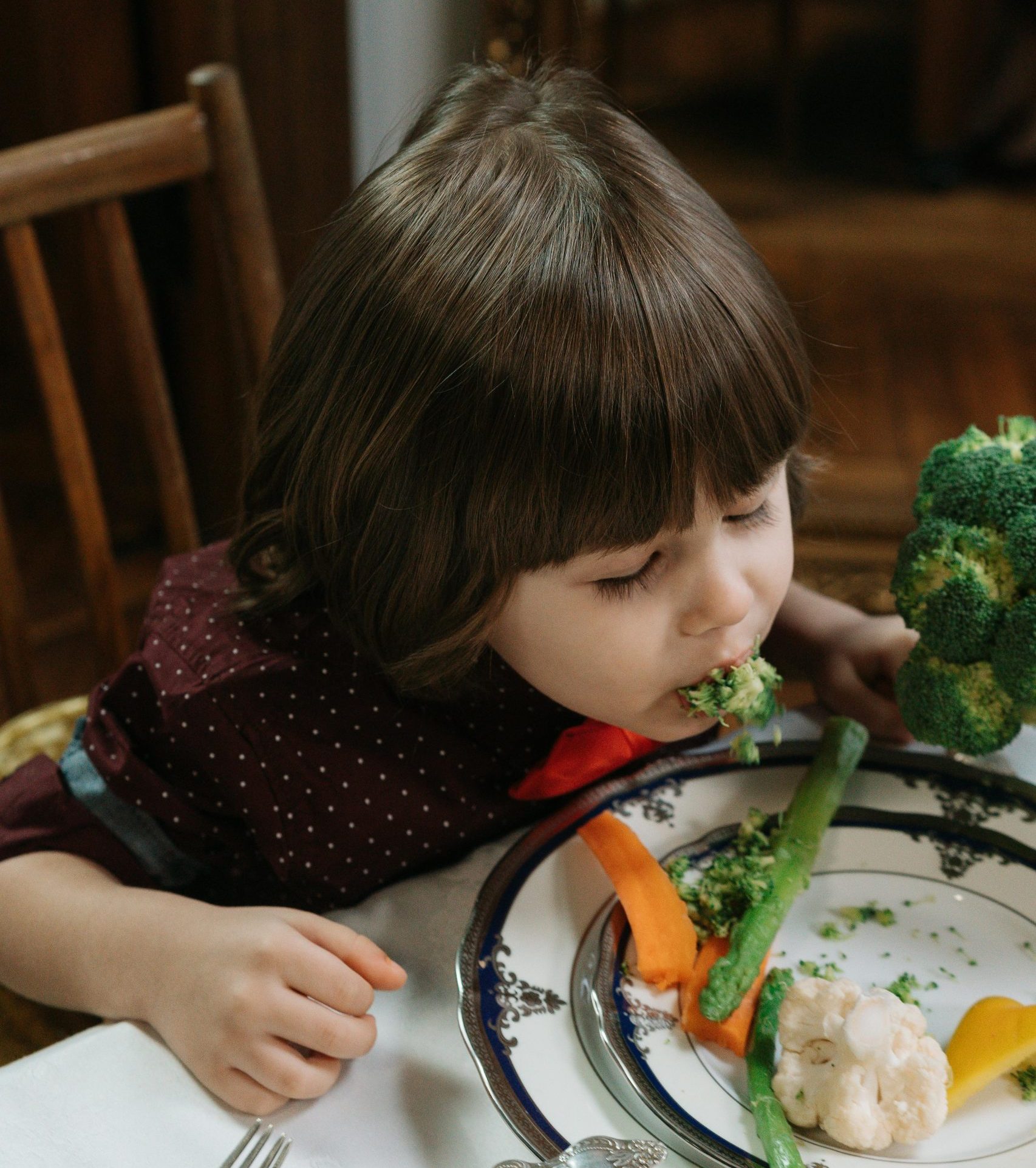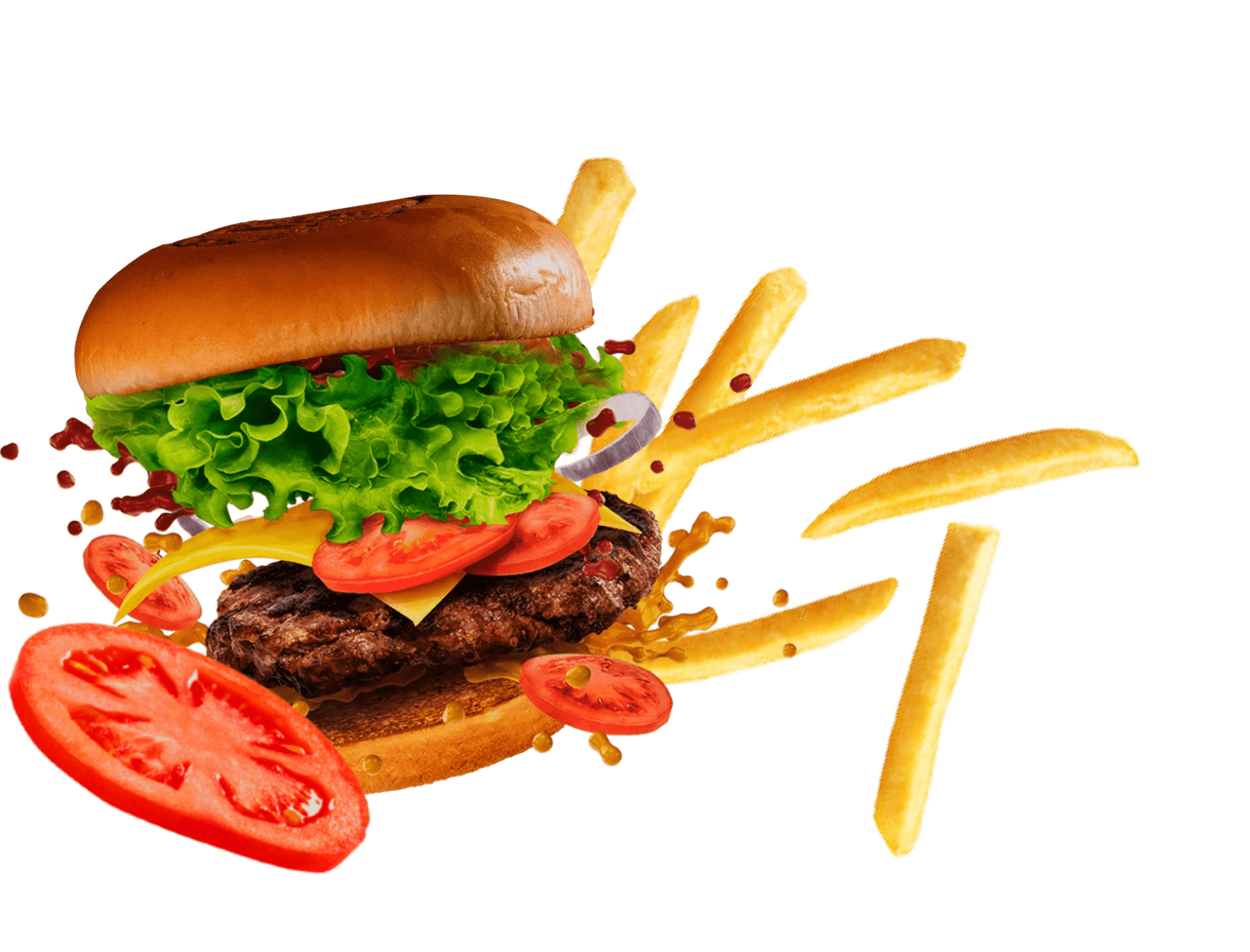7 Historical Immigrant-Owned Restaurants That Shaped LA’s Food Scene
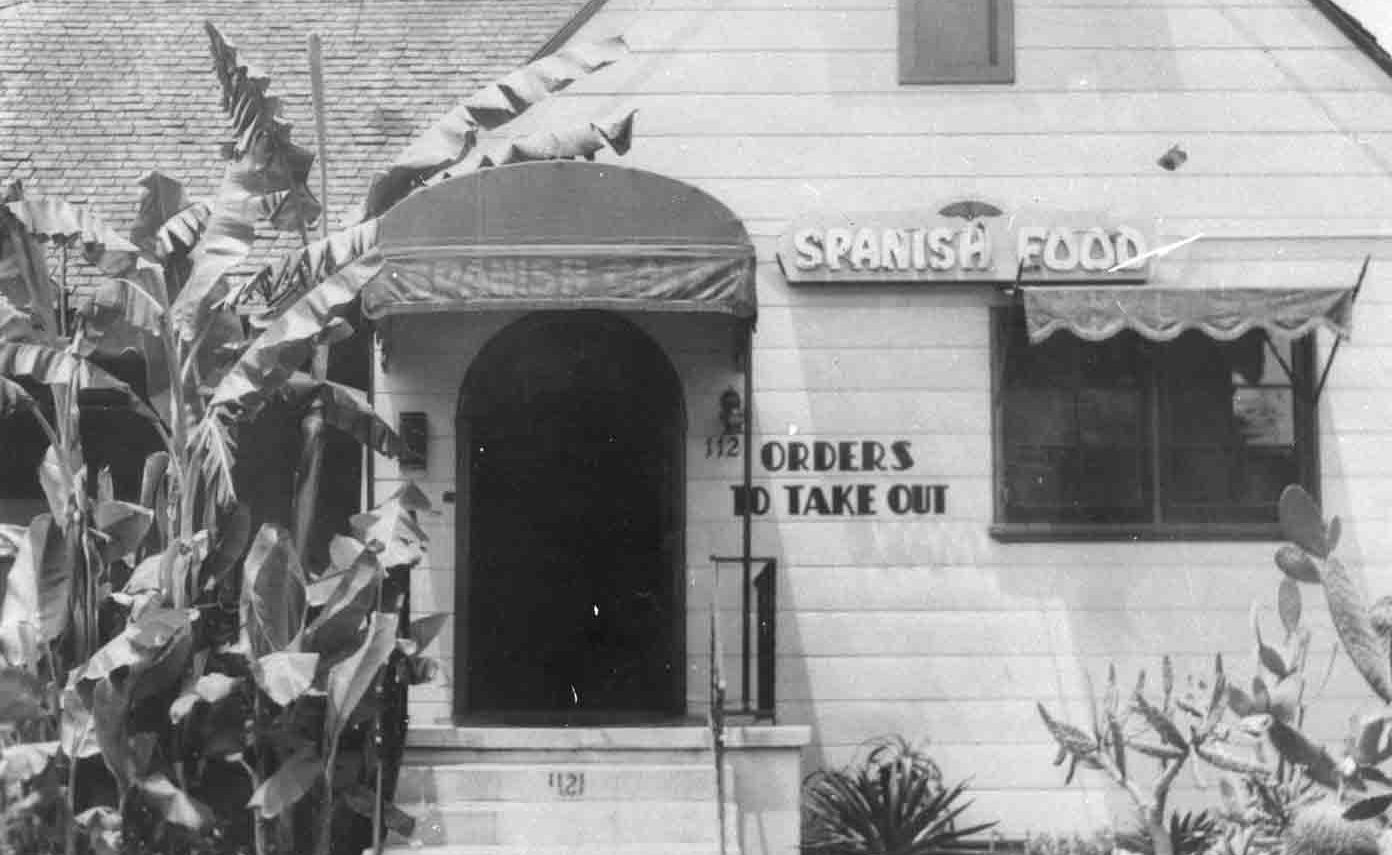
On June 6, ICE raids ordered by President Donald Trump swept across Los Angeles, arresting more than 700 people in days—many without probable cause, and nearly half of Mexican descent. The number of those detained has since doubled. Lawsuits accuse ICE of unconstitutional tactics, inhumane detention conditions, and even deporting U.S. citizens. With ICE raids still ongoing, LA’s immigrant communities remain under attack.
These same communities have built much of the city’s flavor, from pioneering ramen shops to the Mexican chain that brought nachos to LA. Here are 13 immigrant-owned restaurants that helped shape the city’s food scene.
Display mode
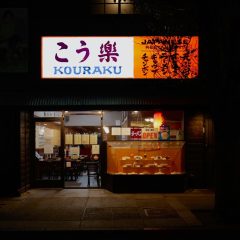
Kouraku (Japanese)
Kouraku is America’s oldest continuously operating ramen restaurant. Founded in 1976, it was purchased by the late Hiroshi Yamauchi in 1986, who served a style of Japanese ramen popularized during the post-World War II era.
Sapporo Ramen preceded Kouraku as the first official ramen restaurant in LA, and had opened in 1962 before closing sometime later. Kouraku attracted only Japanese customers to start, before gradually expanding to Chinese and Korean Americans, then subsequently the whole of LA. Ramen with chashu is one of many dishes the restaurant introduced. It features boneless pork belly, scallions, garlic, and ginger in a savory soy sauce and sake-infused broth.
Yamauchi passed away in 2020, and now the current owner Mamoru Tokuda continues his legacy. Nearly 50 years later, Kouraku sits in the same location with the same iconic white and orange sign. In April 2025, a historical marker was fastened to the street post in front of Kouraku to commemorate its enduring legacy as a Los Angeles landmark.
Sapporo Ramen preceded Kouraku as the first official ramen restaurant in LA, and had opened in 1962 before closing sometime later. Kouraku attracted only Japanese customers to start, before gradually expanding to Chinese and Korean Americans, then subsequently the whole of LA. Ramen with chashu is one of many dishes the restaurant introduced. It features boneless pork belly, scallions, garlic, and ginger in a savory soy sauce and sake-infused broth.
Yamauchi passed away in 2020, and now the current owner Mamoru Tokuda continues his legacy. Nearly 50 years later, Kouraku sits in the same location with the same iconic white and orange sign. In April 2025, a historical marker was fastened to the street post in front of Kouraku to commemorate its enduring legacy as a Los Angeles landmark.
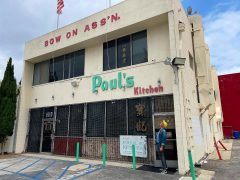
Paul’s Kitchen (Chinese)
Paul’s Kitchen is a Cantonese-style Chinese restaurant founded by Paul Yee. It was briefly called Paul’s Cafe when it opened in 1946, but was renamed after being relocated to the current location in the 1960s. Yee had prior restaurant experience when he immigrated from China in the 20s, bringing along his wife and son. He was pivotal in introducing Chinese American dishes to LA, like beef tomato chow mein, egg foo yong, chop suey and chasu barbecue pork.
Inside, the original terrazzo floor remains, along with the counter seating, Dodger paraphernalia on the walls and decorative pink partitions. Paul’s Kitchen is a notable Dodger hang out. Former Dodgers manager Tommy Lasorda began frequenting the restaurant in the 1970s, often with players in tow. The building was designed by famous Chinese American architect Gilbert Leong, responsible for numerous buildings throughout Chinatown. Paul’s Kitchen shares it with the Bow-On Association, a Chinese benevolent association focused on the social welfare of Chinese immigrants.
Inside, the original terrazzo floor remains, along with the counter seating, Dodger paraphernalia on the walls and decorative pink partitions. Paul’s Kitchen is a notable Dodger hang out. Former Dodgers manager Tommy Lasorda began frequenting the restaurant in the 1970s, often with players in tow. The building was designed by famous Chinese American architect Gilbert Leong, responsible for numerous buildings throughout Chinatown. Paul’s Kitchen shares it with the Bow-On Association, a Chinese benevolent association focused on the social welfare of Chinese immigrants.
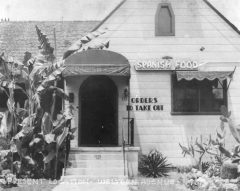
El Cholo Spanish Cafe (Mexican)
El Cholo has sat at 1121 Western Ave. since 1923, when it was called Sonora Cafe. Founders Alejandro and Rosa Borquez changed the name in 1925, inspired by an illustration a customer drew on a napkin named “El Cholo.” The original location was quaint compared to the ones that followed, with room for about a dozen or so customers, and a hot top stove for tortillas and enchiladas. There are now seven locations throughout Southern California, Salt Like City and Mexico City.
Former head chef Joe Reina, who started as a dishwasher, joined in 1935 and remained for 53 years, subsequently crafting many of the chain’s popular menu items. In 1953, however, Carmen Rocha was hired, bringing with her a unique dish from her hometown of San Antonio: Tex-Mex-style nachos. Unlike the Sonora-style nachos currently on the menu, they were pretty straightforward, made with layers of tortilla chips, jalapeños, and cheddar cheese. Rocha’s nachos were the first to be sold in Los Angeles.
Former head chef Joe Reina, who started as a dishwasher, joined in 1935 and remained for 53 years, subsequently crafting many of the chain’s popular menu items. In 1953, however, Carmen Rocha was hired, bringing with her a unique dish from her hometown of San Antonio: Tex-Mex-style nachos. Unlike the Sonora-style nachos currently on the menu, they were pretty straightforward, made with layers of tortilla chips, jalapeños, and cheddar cheese. Rocha’s nachos were the first to be sold in Los Angeles.
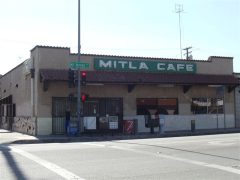
Mitla Cafe (Mexican)
This Route 66 landmark opened in 1937. Mitla Cafe is Inland Empire’s oldest Mexican restaurant, still located in the same place, still family-owned and operated. The late founder Lucia Rodriguez launched it as a lunch counter before expanding to a full restaurant in the 1940s. Many of the original decor still exists — a lengthy eating counter made of laminated wood, picture frames and loads of Route 66 signage on the walls, which are painted a Dijon yellow.
Along with hungry locals, Mitla served business folk, politicians, athletes, celebrities and even civil rights activist Cesar Chavez. It became a place people went to organize and vent their frustrations with racial discrimination. The meetups would eventually inspire the formation of the Mexican Chamber of Commerce.
The restaurant also inspired the creation of Taco Bell. Founder Glen Bell sold hot dogs and hamburgers across the street, watching customer after customer line up for Mitla’s popular ten cent tacos dorados — made with meat, shredded cheese and diced tomatoes in a fried tortilla shell. Sneakily, Bell took it upon himself to befriend the staff so as to procure the recipe, and the rest is history.
Along with hungry locals, Mitla served business folk, politicians, athletes, celebrities and even civil rights activist Cesar Chavez. It became a place people went to organize and vent their frustrations with racial discrimination. The meetups would eventually inspire the formation of the Mexican Chamber of Commerce.
The restaurant also inspired the creation of Taco Bell. Founder Glen Bell sold hot dogs and hamburgers across the street, watching customer after customer line up for Mitla’s popular ten cent tacos dorados — made with meat, shredded cheese and diced tomatoes in a fried tortilla shell. Sneakily, Bell took it upon himself to befriend the staff so as to procure the recipe, and the rest is history.
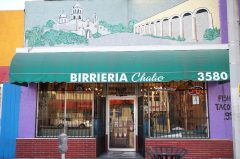
Birrieria Chalio (Mexican)
In Los Angeles, you can experience the savory meat stew birria in a variety of styles, but, before there was birria pizza, birria grilled cheese sandwiches and birria ramen, there was Birreria Chalio’s traditional chivo (goat) birria.
Founded by Chalio Luis in 1987, the Nochisltán-style Mexican restaurant was key in introducing birria to the LA food scene. Luis immigrated to America as a participant in the government’s Bracero program, which allowed Mexican farm and railroad workers to enter the U.S. Once there, he started selling birria chivo from his East LA home, procuring his own live goats and cooking them in a pit dug in the backyard. He eventually opened Birreria Chalio with the help of his family, who still operate it today.
His son Raul Luis runs the Atlantic Ave hub and family members head other locations. There are three in East LA, and a sister location in Fort Worth, Texas. Traditional chivo birria is still the focus, though the menu has expanded since, and now includes quesabirria tacos (beef), quesachiva tacos and filling portions of traditional Mexican classics — burritos, quesadillas, menudo and more.
Founded by Chalio Luis in 1987, the Nochisltán-style Mexican restaurant was key in introducing birria to the LA food scene. Luis immigrated to America as a participant in the government’s Bracero program, which allowed Mexican farm and railroad workers to enter the U.S. Once there, he started selling birria chivo from his East LA home, procuring his own live goats and cooking them in a pit dug in the backyard. He eventually opened Birreria Chalio with the help of his family, who still operate it today.
His son Raul Luis runs the Atlantic Ave hub and family members head other locations. There are three in East LA, and a sister location in Fort Worth, Texas. Traditional chivo birria is still the focus, though the menu has expanded since, and now includes quesabirria tacos (beef), quesachiva tacos and filling portions of traditional Mexican classics — burritos, quesadillas, menudo and more.
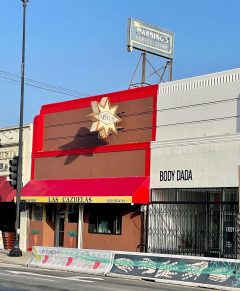
Las Cazuelas (El Salvadoran)
Long before Highland Park became the hip neighborhood it is today, this legendary watering hole was handcrafting authentic El Salvadoran pupusas. For over 30 years, Las Cazuelas has served affordable family recipes brought to America by “Mama Ney,” who opened the restaurant in 1985 with her husband. Now their son Carlos Lopez keeps the tradition alive. He was 8 years old at the time of their arrival, when El Salvadorans were just beginning to move into Highland Park, a neighborhood predominantly Mexican before gentrification in the early 2000s.
Pupusas are El Salvador’s national dish, crafted at Las Cazuelas by chef Santos Rios, a veteran of the establishment. The most popular style is pupusa revuelta (meaning revolt), which comes stuffed with crispy chicharron, a Monterrey, cotija and ranch cheese blend, and served with salsa and tangy curtido. Others include the classic bean and cheese filling, or loroco, an edible Central American flower with a cheesy floral taste. Having survived gentrification, the pandemic, and the influx of Highland Park’s trendy shops, Las Cazuelas is a true taste of Los Angeles’s El Salvadoran history.
Pupusas are El Salvador’s national dish, crafted at Las Cazuelas by chef Santos Rios, a veteran of the establishment. The most popular style is pupusa revuelta (meaning revolt), which comes stuffed with crispy chicharron, a Monterrey, cotija and ranch cheese blend, and served with salsa and tangy curtido. Others include the classic bean and cheese filling, or loroco, an edible Central American flower with a cheesy floral taste. Having survived gentrification, the pandemic, and the influx of Highland Park’s trendy shops, Las Cazuelas is a true taste of Los Angeles’s El Salvadoran history.
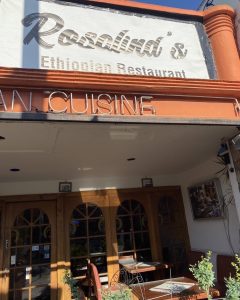
Rosalind’s Ethiopian Restaurant (Ethiopian)
Fekere Gebre-Mariam is the owner of Rosalind’s, the first Ethiopian restaurant on Fairfax Avenue in Little Ethiopia, opened in 1988. Also known as “The Godfather of Little Ethiopia,” he was pivotal in its establishment as an official Los Angeles neighborhood. However, many years before that became a reality, Rosalind’s served authentic Ethiopian cuisine to the surrounding community, when the area was still called “SoFax.”
Mr. Fekere immigrated to LA in 1971, shortly before an influx of Ethiopians came to escape war back home, where insurgents had overthrown the late Emperor Haile Selassie. In 1994, he’d convinced five Ethiopian entrepreneurs to open businesses on the Fairfax block, which was previously named “Ethiopian Restaurant Row,” then “Little Addis” before the official name in 2002.
Rosalind’s is a fork and knife-free affair, food is meant to be enjoyed with your hands, communally with loved ones. The menu has a wide selection of standout dishes that includes injera bread with doro wot, a spicy berbere-spiced chicken stew, and a vegetarian platter with six flavorful sample foods.
Mr. Fekere immigrated to LA in 1971, shortly before an influx of Ethiopians came to escape war back home, where insurgents had overthrown the late Emperor Haile Selassie. In 1994, he’d convinced five Ethiopian entrepreneurs to open businesses on the Fairfax block, which was previously named “Ethiopian Restaurant Row,” then “Little Addis” before the official name in 2002.
Rosalind’s is a fork and knife-free affair, food is meant to be enjoyed with your hands, communally with loved ones. The menu has a wide selection of standout dishes that includes injera bread with doro wot, a spicy berbere-spiced chicken stew, and a vegetarian platter with six flavorful sample foods.
